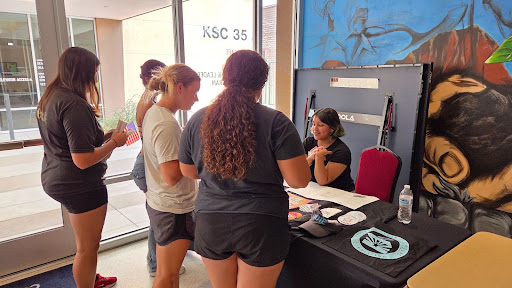Students struggle to qualify for financial aid
Ian Kraft
Mesa Legend
One of the largest obstacles that students face after high school is paying for their college education. In an effort to ease the process, Mesa Community College has instituted a financial aid program. Prospective students are able to communicate their respective financial situations to the college through the usage of the FAFSA, (Formal Application for Financial Student Aid), and in turn governmental funds will be distributed to those in need of assistance. Although community college tuition prices are substantially cheaper than those of state universities, students in this economy are in great need of as much assistance as possible. For example, former MCC student and current ASU student, Justin Marshall has had experience with both universities and their respective financial aid offices. “From a pure numbers standpoint, before all of the financial aid that I received, I paid a little over a grand ($1,000) to go to MCC for a semester,” Marshall said. “For my first semester at ASU, I was looking at around $17,000.”
Arlene DeLeon, a student services specialist at Mesa Community, spoke on the issue.
“As much as financial aid is out of our control, we as a department do attempt to guide each and every student in the most beneficial way possible,” DeLeon said. Melissa Tornero is another student at Mesa Community College who applies for financial aid. “What makes my circumstance unique is that my parents both work decent-paying jobs. According to FAFSA, I have to report that to them so they can appropriately grant me money. However, there is no section that allows me to explain that although it is true that my parents make money, there is no way to tell the people at FAFSA that my parents do not want to help me pay for my college tuition,” Tornero said.
The FAFSA does attempt to accommodate the financial needs of students, while also taking into consideration the student’s home life circumstances. Tornero went on to explain the misconception that the FAFSA has on her. Polli Johnston is the admissions and records and registration service representative at Mesa Community College, and she advocates for students. “Without a doubt, one of the greatest disservices the FAFSA provides is the lack of attention to students,” Johnston said. “Don’t misunderstand, the work that FAFSA does for students is great, as a whole. With that said, it would be unfair of me to assume that FAFSA can take care of every prospective student. However, every year we hear stories from five or 10 students who were barely given any financial aid and in turn are unable to attend college because of it.
“In terms of a solution, I have no clue,” Johnston continued. “There are so many students that receive the aid that they need that it’s tough to knock on FAFSA. However, for each success story, there are another two or three students with sob stories about the FAFSA didn’t do enough. It’s a glamor-less job, no question.” Rebecca Smouse is a case in which the people at FAFSA gave her enough financial aid to chase her dreams. “Without my financial aid awards, I wouldn’t be in college,” Smouse said. “I have been able to go to Arizona State and pursue my dreams of being a journalist at the Walter Cronkite School of Journalism. All of this is possible because FAFSA awarded me almost $8,000 per semester, and I am so thankful. There is no doubt in my mind that without the help from them, I’d have no chance to go to college at all, nonetheless ASU.”









